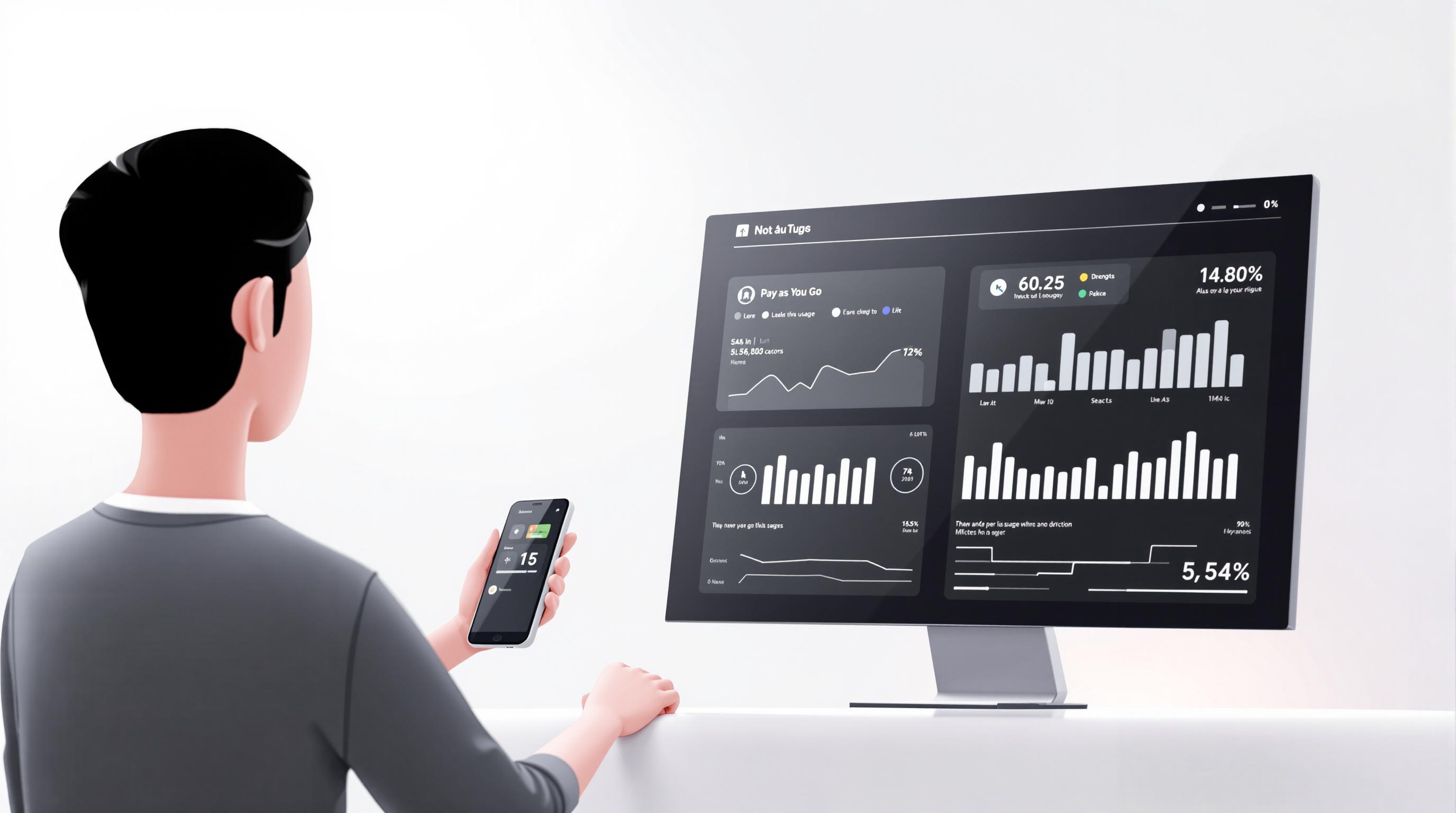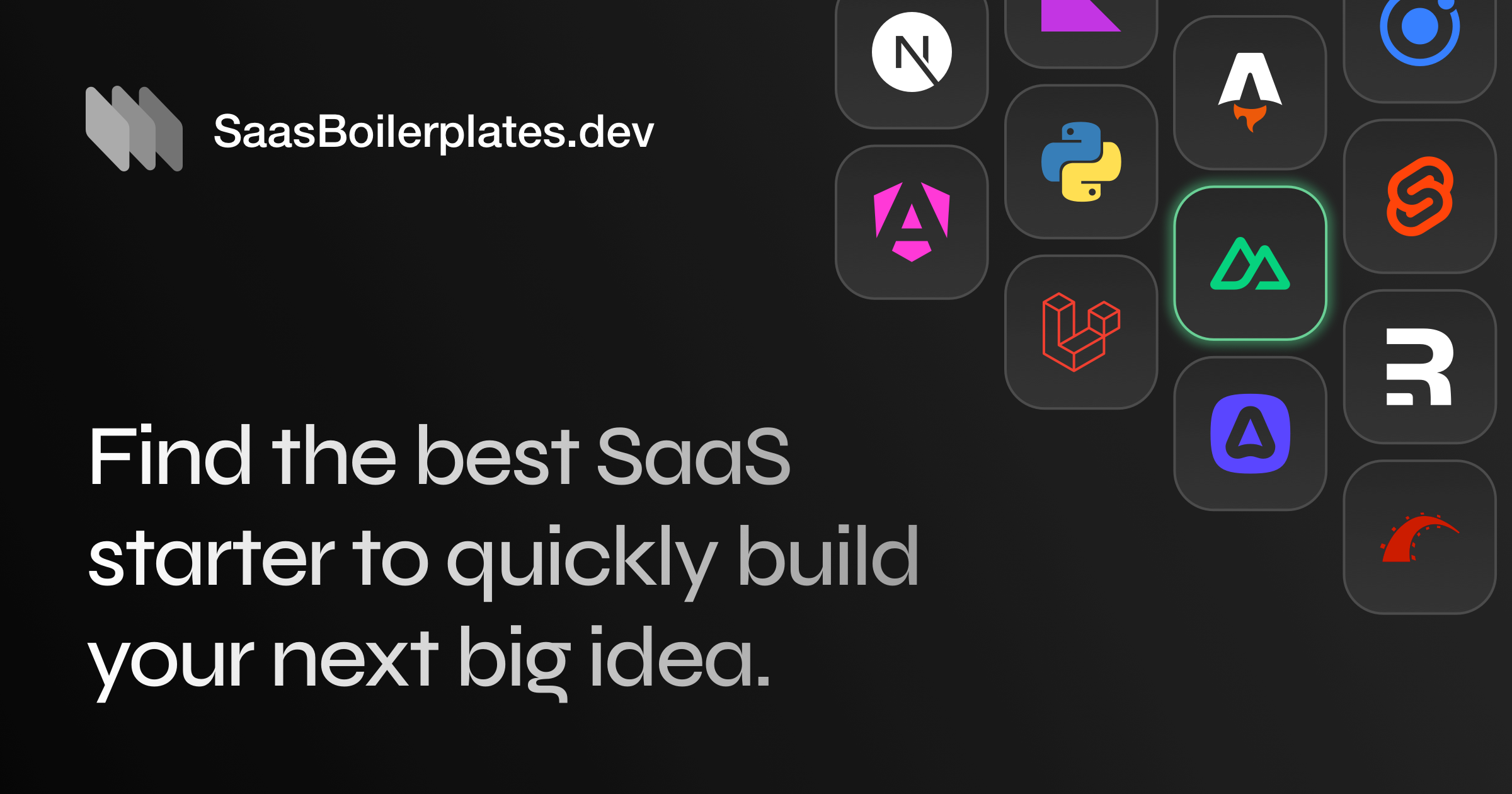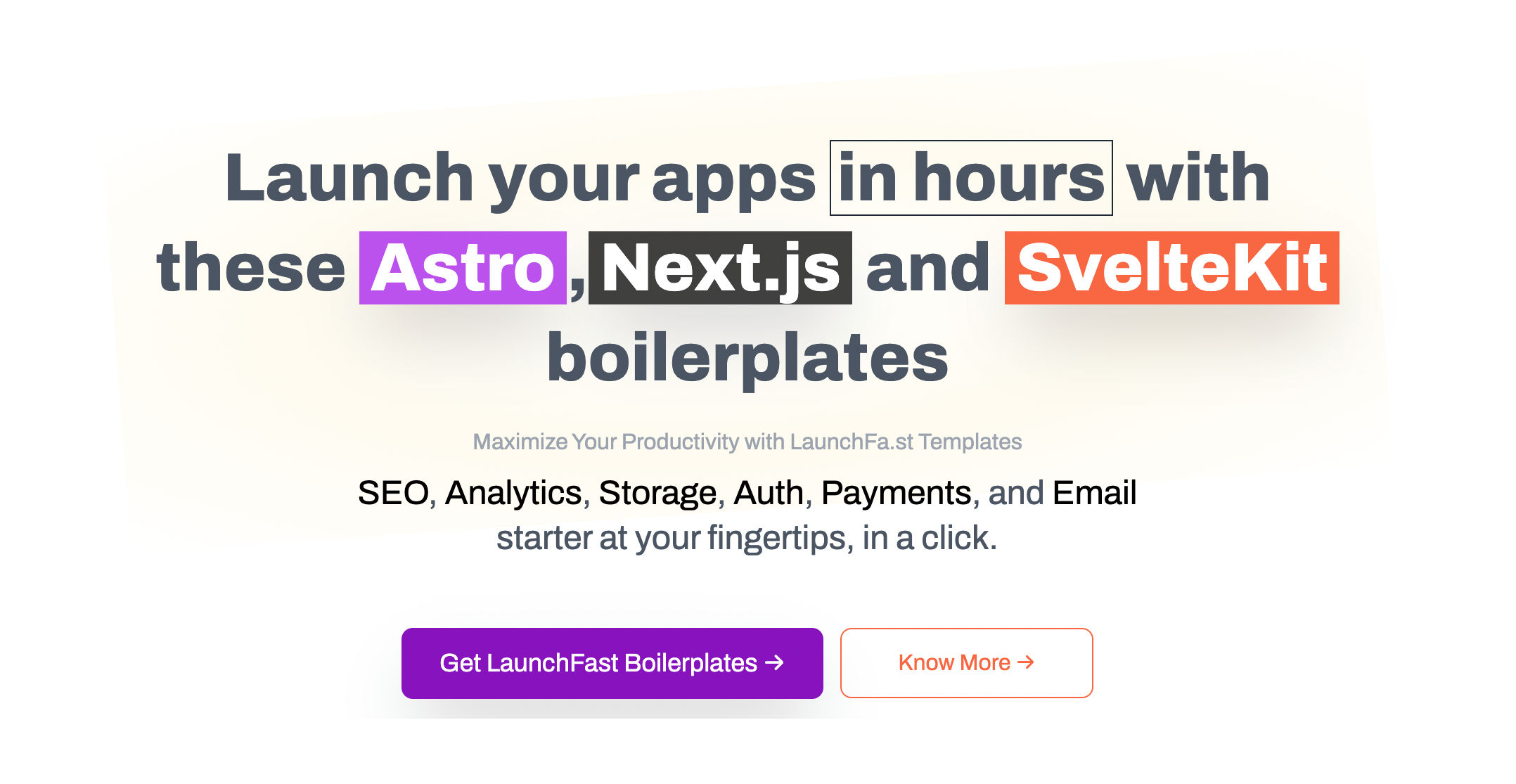Ultimate Guide to Pay-as-You-Go Pricing for SaaS
Benefits and challenges of pay-as-you-go pricing for SaaS, including model types, setup steps, and optimization tips.

Pay-as-you-go (PAYG) pricing lets SaaS customers pay only for what they use, offering flexibility and cost control. For SaaS providers, it aligns revenue with customer consumption and supports scalability. Here’s a quick breakdown:
- What is PAYG? Customers are charged based on usage (e.g., API calls, storage, compute resources).
- Benefits: Cost efficiency, scalability, no upfront fees, and easier adoption for new users.
- Challenges: Usage tracking, variable revenue, and the need for clear customer communication.
- Model Types:
- Direct Usage: Simple per-unit pricing (e.g., Twilio).
- Usage Tiers: Pricing brackets with volume discounts.
- Mixed Models: Combines subscriptions with usage-based fees.
- Setup Steps: Choose clear metrics, implement billing systems (e.g., Stripe), and use SaaS boilerplates for easier integration.
- Optimization Tips: Analyze usage patterns, update pricing tiers, and manage cost spikes with alerts and caps.
Quick Comparison Table:
| Model Type | Cost Predictability | Implementation Complexity | Revenue Stability | Customer Understanding |
|---|---|---|---|---|
| Direct Usage | Low | Simple | Variable | High |
| Usage Tiers | Medium | Moderate | More Stable | Medium |
| Mixed Models | High | Complex | Most Stable | Varies |
PAYG pricing works best when paired with transparent communication, reliable usage tracking, and tools like SaaS boilerplates to simplify billing. Start small, monitor performance, and adjust as needed to balance customer satisfaction with business goals.
8 SaaS pricing models explained in under 3 minutes
PAYG Pricing Model Types
Pay-as-you-go (PAYG) pricing models are designed to suit different SaaS needs. Here are three common types.
Direct Usage Pricing
This model charges customers based on a simple cost-per-unit structure. Companies like Twilio and SendGrid use this method, billing users per use without requiring a minimum commitment.
It’s a good fit for services with consistent unit costs and straightforward scaling. For example, cloud storage providers often charge customers based on the amount of storage they use.
Usage Tiers
Usage tiers group pricing into brackets, making it easier to balance predictable revenue with flexible costs. For instance, payment processing services often lower transaction fees as a customer’s monthly transaction volume increases.
This model allows SaaS companies to adjust pricing as their customers’ usage grows, aligning costs with demand.
Mixed Pricing Models
Mixed pricing combines elements of PAYG with subscription-based features. Typically, it includes a fixed base fee for platform access, along with additional charges for usage-based services like storage or compute resources.
This approach is especially useful for enterprise SaaS businesses, offering predictable revenue while allowing billing to scale with customer consumption.
Here’s a quick comparison of these models:
| Factor | Direct Usage | Usage Tiers | Mixed Models |
|---|---|---|---|
| Cost Predictability | Low | Medium | High |
| Implementation Complexity | Simple | Moderate | Complex |
| Revenue Stability | Variable | More Stable | Most Stable |
| Customer Understanding | High | Medium | Varies |
Choosing the right model depends on your service type and how your customers use it.
Setting Up PAYG Pricing
Planning a pay-as-you-go (PAYG) pricing model involves several important steps. These build on the pricing model types covered earlier.
Selecting Usage Metrics
Choose metrics that represent the value your customers receive. For example, Snowflake calculates compute credits based on virtual warehouse usage, while Twilio tracks API calls and message deliveries.
When deciding on metrics, keep these factors in mind:
- Value alignment: Pick metrics that genuinely reflect the benefits customers get.
- Measurability: Ensure accurate and reliable tracking.
- Transparency: Use metrics that customers can easily understand and monitor.
Billing System Setup
A dependable billing system is essential for PAYG pricing. Tools like Stripe and Paddle are designed for usage-based billing and include features to simplify the process. Key components include:
- Usage tracking system: Set up a system to monitor usage in real-time.
- Automated billing pipeline: Streamline processes like aggregating data, pricing, invoicing, and payment collection.
- Reporting dashboard: Provide a dashboard showing current usage, cost estimates, and billing history. For instance, Stripe’s dashboard offers real-time metrics and detailed cost breakdowns.
Using SaaS Boilerplates
SaaS boilerplates make setting up PAYG pricing faster by offering pre-built tools for billing, authentication, and usage tracking. Best SaaS Boilerplates provides a curated list of starter kits that include these features.
Options range from basic solutions with simple tracking and single payment integrations to advanced systems with analytics, multiple payment gateways, extensive customization, and dedicated support. Costs vary widely, from free to several hundred or even thousands of dollars, depending on the features.
”Skip the hassle of coding boilerplate features. useSAASkit has done the hard work for you. Focus on launching your idea, attracting users, and making your first dollar online.” - Sharvin Shah, useSAASkit
When choosing a boilerplate, focus on these qualities:
- Strong payment integrations: Ensure it connects seamlessly with major payment processors.
- Scalability: Pick a solution that can handle increasing transaction volumes.
- Clear documentation: Look for platforms with easy-to-follow setup guides and reliable support.
- High security standards: Confirm it meets PCI compliance and includes robust data protection.
Improving PAYG Performance
Usage Pattern Analysis
Understanding how customers use your service is crucial for refining PAYG pricing. Focus on key metrics like peak demand, resource consumption, feature engagement, and customer segmentation by usage patterns. Pay particular attention to:
- When usage peaks occur
- The rate at which resources are consumed
- Which features are most utilized
- How different customer groups use the service
These data points help you fine-tune pricing tiers to ensure both profitability and customer satisfaction.
Price Tier Updates
Regularly revisiting and adjusting your pricing tiers can help you stay competitive and meet customer needs. Here’s what to keep in mind:
- Clearly define usage thresholds for each tier
- Introduce volume discounts for heavy users
- Adjust pricing based on seasonal trends
- Stay aligned with the latest market pricing trends
In addition to updating price tiers, it’s important to address unexpected cost increases effectively.
Managing Cost Spikes
Sudden usage spikes can lead to unexpected bills for customers. To avoid this, consider these strategies:
- Set up alerts to notify users of high usage
- Offer spending caps to prevent excessive charges
- Use auto-scaling to handle increased demand efficiently
- Provide real-time budget dashboards for better cost visibility
These measures not only keep costs under control but also ensure a seamless customer experience.
PAYG Problems and Fixes
Clear Customer Communication
When it comes to pay-as-you-go (PAYG) services, keeping customers informed is key. Make sure they understand their usage and costs to avoid misunderstandings. Here’s how:
- Use simple language to explain how usage is tracked and costs are calculated.
- Offer real-time usage updates through easy-to-read dashboards.
- Send alerts for any pricing or metric changes.
- Provide direct support channels for billing-related questions.
On top of that, handle billing concerns quickly and clearly. This helps strengthen trust with your customers.
Billing Issue Resolution
Once communication is in place, focus on resolving billing problems efficiently. Here’s what to do:
- Keep detailed records of usage and billing calculations so they’re easy to access.
- Set up straightforward ways for customers to report billing issues.
- Act quickly to address concerns and provide clear explanations for how they were resolved.
These steps not only simplify the resolution process but also help reinforce customer confidence.
Conclusion
PAYG Advantages
Pay-as-you-go (PAYG) pricing provides a flexible way for SaaS businesses to manage costs while scaling. By matching expenses to actual usage, it makes services more accessible and works well for customers with varying consumption patterns.
Problem-Solving Tips
Facing challenges with PAYG implementation? Here’s how to tackle them effectively:
- Track usage accurately: Use reliable tools to monitor consumption in real time.
- Offer tiered pricing: Cater to different customer needs by creating pricing levels.
- Provide clear usage details: Ensure customers can easily see their usage and costs through transparent dashboards.
With the right systems in place, you can build a PAYG strategy that works seamlessly.
Implementation Resources
Modern tools can simplify the process of setting up PAYG pricing. For instance, Best SaaS Boilerplates offers a range of starter kits, from free to premium, designed to speed up development.
Some of the key features these boilerplates provide include:
- Authentication and user management
- Billing system integrations
- Usage tracking tools
- Intuitive dashboards for control and visibility
When choosing a boilerplate, ensure it fits your tech stack and supports your payment gateway. These tools can save you time while ensuring your PAYG pricing is scalable and efficient.
Recommended SaaS Boilerplates
Here are three highly regarded SaaS boilerplates that have already integrated billing systems to help you get started:






